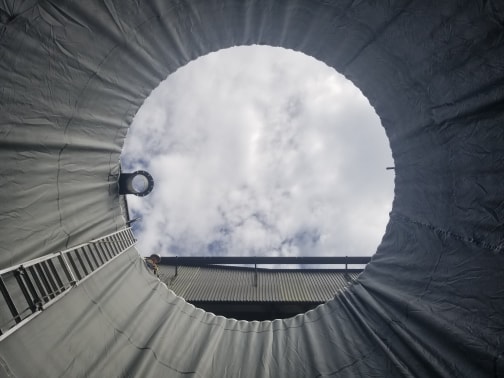
The two most crucial aspects for factories and other production facility owners to think about are efficiency and safety. The significance of safety increases when businesses store water or chemicals in industrial containers. After all, the contamination of water should not be accepted anywhere.
Today, we are here to discuss the numerous benefits that tank liners offer. From safety to efficacy, read on to discover the top five advantages you can get from using tank liners.
Tank Liners Improve the Life Span of Tanks
The use of a tank lining will help your tank function properly for much longer than was initially anticipated. It will also ensure that your tank operates properly for the complete expected lifespan. An older tank can be brought back to its former splendour with the help of a tank liner, enabling it to continue operating as efficiently and safely as a tank that is considerably younger.
Tank Liners Keep Leaks from Worsening
Regardless of whether they are chemicals or water, your tank’s components must always stay contained. Even though a small crack or leak in your tank may not seem serious at first, if you ignore it, it could have severe consequences and end up costing you a lot of money.
For instance, a faulty tank might result in a slip-and-fall accident or even create a flood in your place of business. By ensuring that all liquids are always kept in their designated containers, tank liners instantly reduce these risks.
Tank Liners Make Tanks Anti-corrosive
There is a chance that some vessels will age more quickly than others, depending on the liquids they contain or the materials they were made of. By creating a barrier between the tank’s contents and the tank itself, tank liners effectively reduce the risk of corrosion. When tanks contain caustic chemicals like chromic or nitric acids or other caustic materials, premium tank liners are especially beneficial in avoiding corrosion.
Another benefit of water tank linings is that they can aid in preventing rust brought on by changes in temperature, humidity, wind, rain, or moisture. This is just one of the many advantages that water tank linings can provide. Leakage and more severe harm can result from a tank’s expansion and cracking after being exposed to excessively hot or cold temperatures.
High-quality tank liners help shield tanks from environmental harm and increase their resistance to corrosion compared to other types of tanks.
Tank Liners Come with Simple Installation
In comparison to the time required to rebuild and repair a tank after it has suffered significant damage, installing water tank liners is a relatively quick and simple procedure. For instance, installing PVC tank liners can frequently be done in a single day, significantly reducing the amount of delay your company experiences.
Because they can be made to fit tanks of almost any size and shape, they are a highly adaptable option. No matter what size tank you have, it is possible to protect and seal it swiftly and effectively.
Tank Liners Are Cost-Efficient
A damaged industrial vessel might need to be replaced, which can be an expensive procedure. Even comparatively affordable crevice treatments can accumulate substantial costs over time.
The cost-effectiveness of tank liners is one of their greatest advantages because it allays the main financial worry of many company owners. This makes one of tank liners’ most important benefits: their ability to be inexpensive. The installation of a tank liner that reduces the likelihood of damage and cracks will bring about a reduction in the cost of repairing fractures.
Conclusion
There is nothing worse than discovering the issue of water contamination, especially when you know you could have prevented it. Thankfully, with tank liners, companies can avoid rusting, the spread of bacteria, and the deterioration of storage and walls, among others.
Are you looking for a professional supplier of tank liners? ATM Tanks offers a wide variety of quality products for the needs of your tanks. Request a quote from us today!
- Five Essential Tips for Tank Waterproofing - November 16, 2025
- The Best Methods for Industrial Tank Cleaning - November 16, 2025
- Proper Techniques in Tank Cleaning for Food Storage - November 16, 2025






